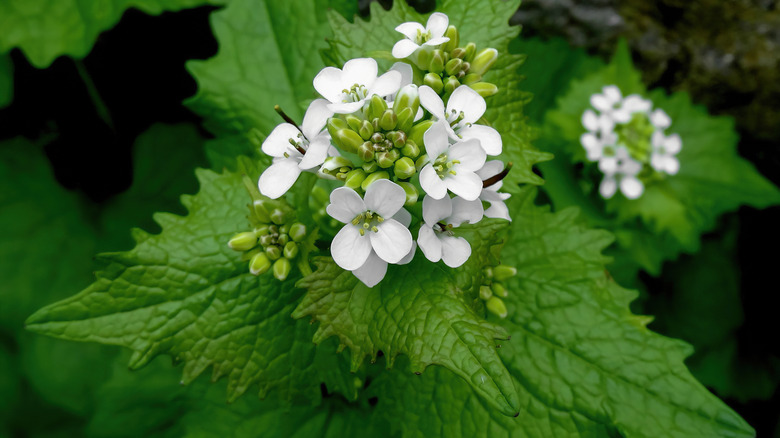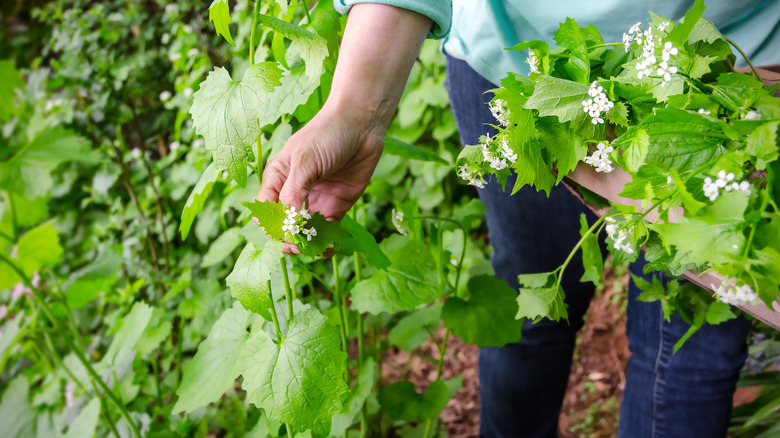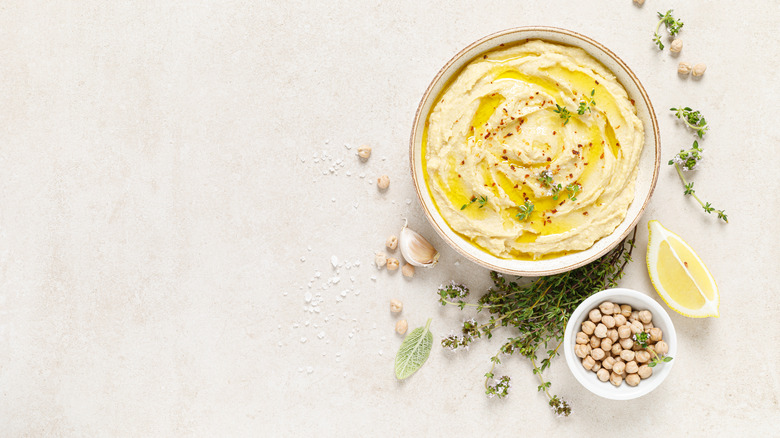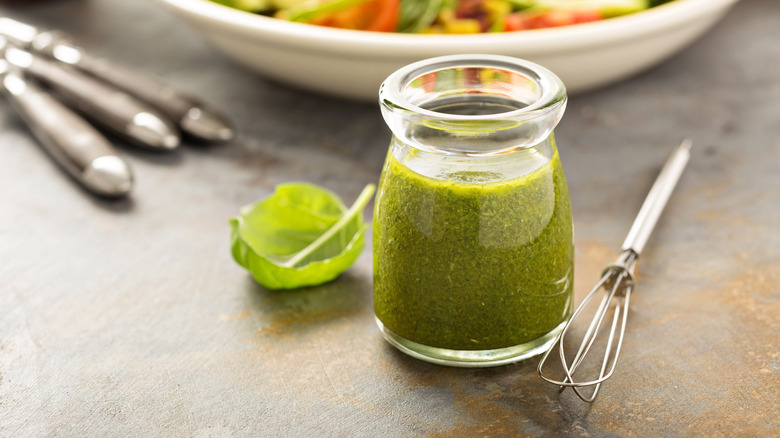What Is Garlic Mustard And What Does It Taste Like?
Garlic and mustard. Both are very popular ingredients or add-ons for multiple foods. Think of a hamburger or hot dog: One of the many toppings is, of course, mustard. Garlic happens to be added in just about any dish and toasted garlic can be used as a topping. But have you ever had "garlic mustard?"
This plant is known scientifically as alliaria petiolata and it is definitely an interesting ingredient! It is native to Europe, where it is found from England to the area formerly known as Czechoslovakia. It can also be found in Sweden, Germany, and southern Italy, says Michigan State University.
Although it is more commonly known as garlic mustard, you may also hear it called garlicwort, hedge-garlic, jack-by-the-hedge, jack-in-the-bush, mustard root, poor-man's-mustard, and sauce-alone when not in North America. There is a lot to pick apart when it comes to garlic mustard so let's delve in!
What exactly is it?
Garlic mustard is a biennial herb (via Earth.com). It is triangular with heart-shaped leaves and white flower petals. But interestingly enough, its herbal and medicinal properties, not its taste, were the main reasons it was first brought to North America in the 19th century, per The Nature Conservancy. Fun fact: it is called garlic mustard because crushing the leaves causes them to give off a garlic smell.
This plant just gets more and more interesting because while it can be eaten and used in dishes, it's also an invasive species. This means it can be a threat to the biodiversity of many native ecosystems. The seeds are spread in the wind, meaning they can land and plant in places where native plants usually are. This eventually blocks the native species from getting needed moisture and nutrients.
For non-cooking purposes, it is best to rid yourself of this plant in your garden or be very careful when planting. Pull up garlic mustard after it rains and before it seeds. But be sure to not compost the plants! Or you'll be back repeating this same cycle.
However, don't let this fool you. Every part of the plant is edible, from the roots to the seeds.
What does it taste like?
Once you have gotten your hands on some garlic mustard, make sure to rinse them off completely. You can remove the leaves and flower buds from the stem. The stem is great to add in things like pesto, hummus, and other dipping sauces, per Four Season Foraging. The outlet says the stem is the tastiest part.
It has a few different flavors like sweet, garlicky, and rich. It can be cut up just like you would with a green onion and sauteed, served raw, or cooked with butter. In general, the garlic flavor is mostly found in the stem part of the plant. But there are still many more edible pieces to go through.
Now there are the leaves and flower buds. The leaves can be pretty bitter compared to the stem and is a mixture between mustard green and garlic. The flower parts don't taste as sweet as they look. When eaten, you'll get more of a "spicy, horseradish taste," according to Four Season Foraging.
Where can you buy it?
After all of this new knowledge, you may be thinking "time to head to the store and try some out!" Well, sadly, that really isn't an option for a lot of people. This invasive yet completely edible plant is not usually available at any supermarkets or grocery stores, says Earth.com. Since it isn't a usual herb like oregano or basil, it isn't going to be down the spice aisle.
If you want to give it a go, you'll have to plant your own or search for it outside. Funnily enough, it thrives on roadsides, so you can always make a small 30-minute road trip out of it! One reason it is so invasive is that it can practically grow anywhere. From cities to rural or country areas, garlic mustard will be there.
When looking for it, you have to make sure you identify the right plant. It sports basal leaves and a small white flower in the middle that has four petals that form a cross shape. The easiest way by far to see if it is the right plant is just by smelling for garlic. It is a very strong smell that'll slide its way up your nose. Earth.com says if you really can't find it out and about, then ask a local botanist or member of a native plant chapter near you for help.
Once you get it, how do you cook it?
It may not come as a surprise that there aren't a ton of recipes that call for garlic mustard. If you can't get it at any grocery store, it sure is hard to include in a cookbook! However, there are a few ideas out there for those wanting to give it a chance after a foraging trip on the side of the road.
Two promising possibilities are garlic mustard pesto and garlic mustard chimichurri. But, you can also just chop up the stems of the plant and put them in a salad, soup, stew, top them on a taco, and so on (via Four Season Foraging). They can lend themselves well as a garnish rather.
Food52 says to make a pesto you just need garlic mustard leaves and tips, pine nuts, garlic, parmesan, oil, salt, sugar, and lemon juice. Besides the plant and probably pine nuts, these are all pretty common kitchen items! You just simply combine the dry ingredients into a blender, once smooth, add in the wet. Just like that, you'll have a unique pesto dip.
An even simpler recipe is a chimichurri. You just combine mustard garlic, chopped garlic, zest of a lemon, red wine vinegar, smoked paprika, salt, and oil to a blender and hit blend, says Blossom To Stem.
Whether you happen to find some out while camping or on a pitstop on a road trip, it is worthwhile to give this interesting plant a small taste. Besides, who can say no to the smell of fresh garlic?




